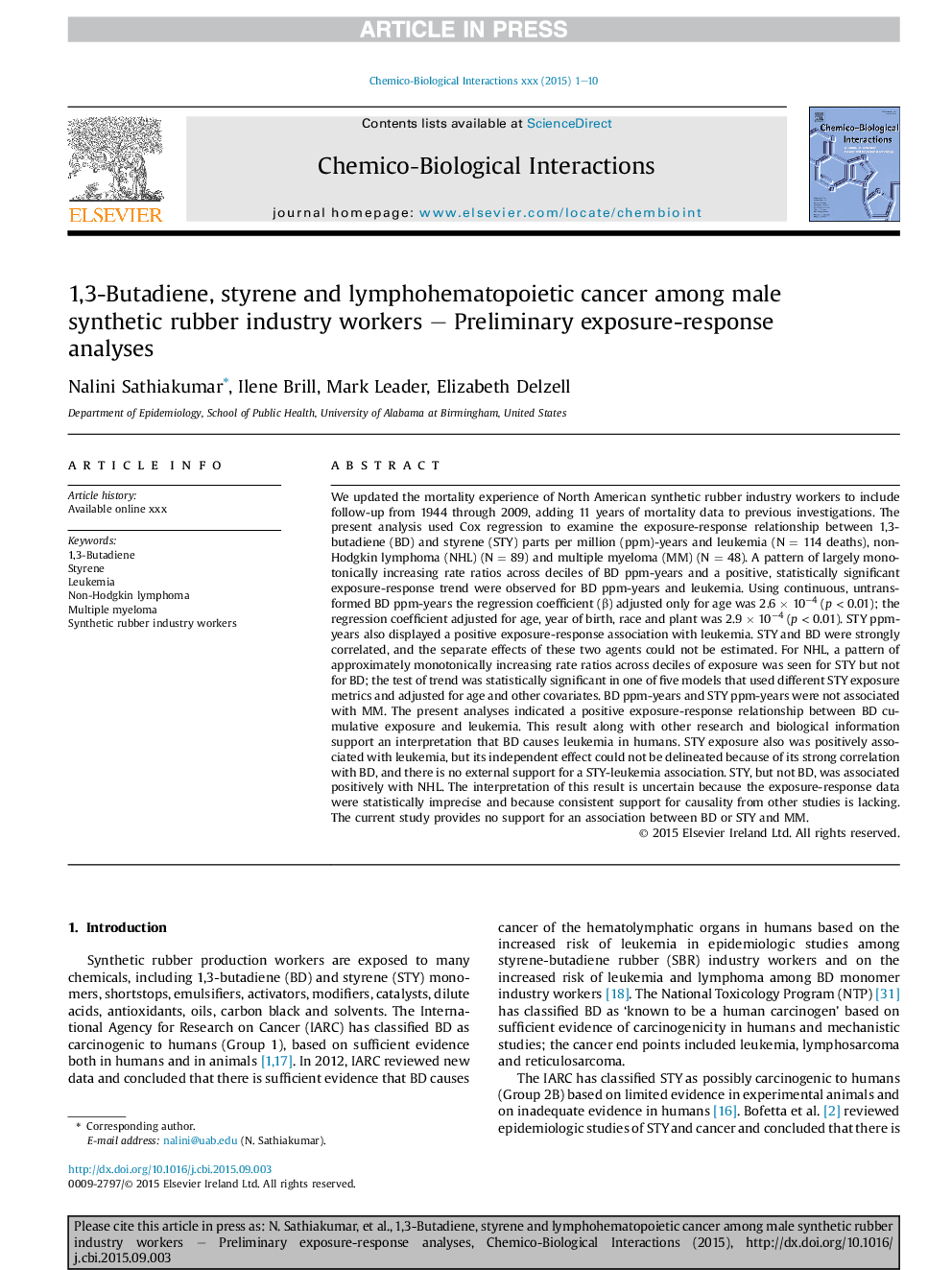| Article ID | Journal | Published Year | Pages | File Type |
|---|---|---|---|---|
| 5847731 | Chemico-Biological Interactions | 2015 | 10 Pages |
Abstract
We updated the mortality experience of North American synthetic rubber industry workers to include follow-up from 1944 through 2009, adding 11 years of mortality data to previous investigations. The present analysis used Cox regression to examine the exposure-response relationship between 1,3-butadiene (BD) and styrene (STY) parts per million (ppm)-years and leukemia (N = 114 deaths), non-Hodgkin lymphoma (NHL) (N = 89) and multiple myeloma (MM) (N = 48). A pattern of largely monotonically increasing rate ratios across deciles of BD ppm-years and a positive, statistically significant exposure-response trend were observed for BD ppm-years and leukemia. Using continuous, untransformed BD ppm-years the regression coefficient (β) adjusted only for age was 2.6 Ã 10â4 (p < 0.01); the regression coefficient adjusted for age, year of birth, race and plant was 2.9 Ã 10â4 (p < 0.01). STY ppm-years also displayed a positive exposure-response association with leukemia. STY and BD were strongly correlated, and the separate effects of these two agents could not be estimated. For NHL, a pattern of approximately monotonically increasing rate ratios across deciles of exposure was seen for STY but not for BD; the test of trend was statistically significant in one of five models that used different STY exposure metrics and adjusted for age and other covariates. BD ppm-years and STY ppm-years were not associated with MM. The present analyses indicated a positive exposure-response relationship between BD cumulative exposure and leukemia. This result along with other research and biological information support an interpretation that BD causes leukemia in humans. STY exposure also was positively associated with leukemia, but its independent effect could not be delineated because of its strong correlation with BD, and there is no external support for a STY-leukemia association. STY, but not BD, was associated positively with NHL. The interpretation of this result is uncertain because the exposure-response data were statistically imprecise and because consistent support for causality from other studies is lacking. The current study provides no support for an association between BD or STY and MM.
Related Topics
Life Sciences
Environmental Science
Health, Toxicology and Mutagenesis
Authors
Nalini Sathiakumar, Ilene Brill, Mark Leader, Elizabeth Delzell,
